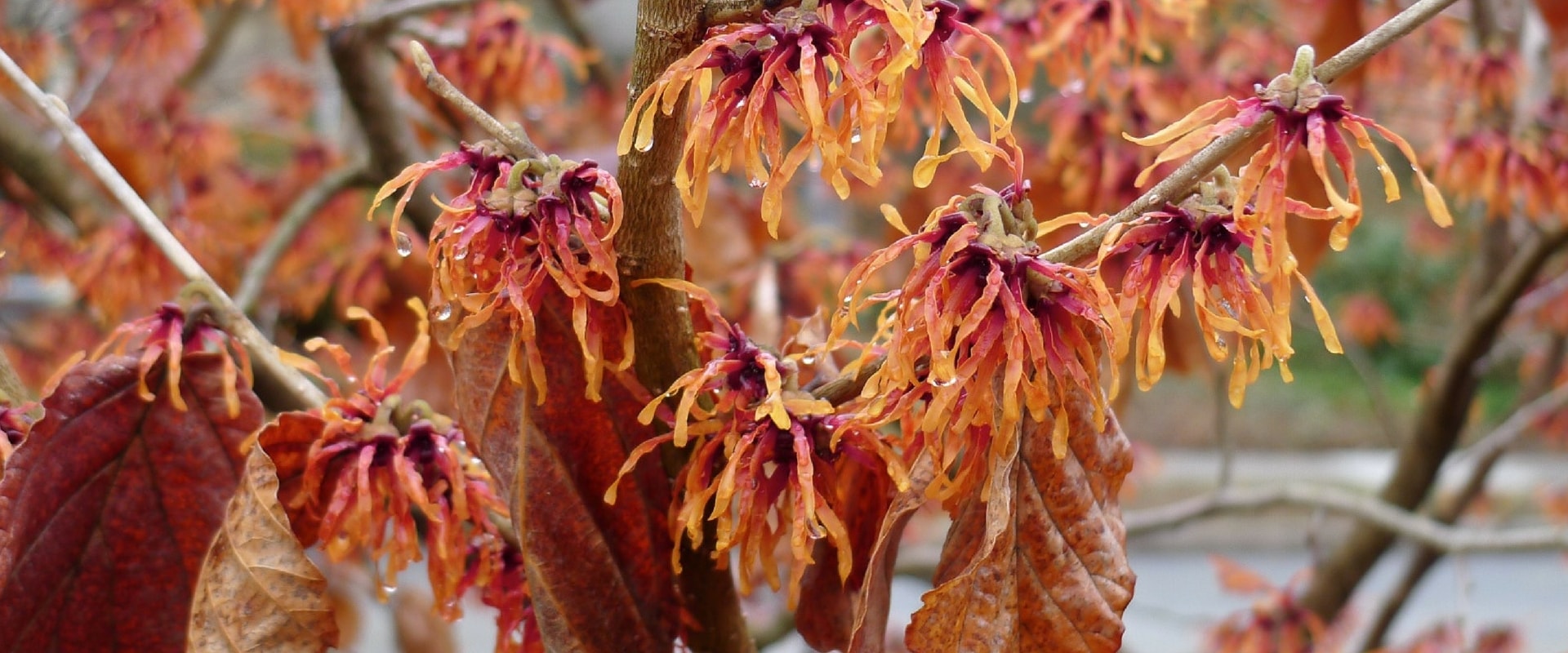
Witch hazel: planting, growing, care, and pairing ideas
Contents
Witch hazel in a nutshell
- Witch hazel is one of the few bushes that flowers in the heart of winter.
- Its astonishing spider-like flowering, in golden yellow or red, is highly fragrant.
- Its spicy-coloured foliage sets the garden ablaze in autumn.
- Easy to maintain and cultivate, it is cold-resistant, disease-resistant, and requires little attention.
- Compact in size when mature and slow-growing, this elegant bush finds its place in all gardens.
A word from our expert
Elegant and mysterious, long known as Witch Hazel, Hamamelis is the essential ornamental bush in winter. Its delightfully fragrant flowering and vibrant autumn foliage enliven the garden, which is dormant in the cold, creating an extraordinary tableau. Its reasonable adult size, relatively slow growth, and resistance to polluted atmospheres make it a perfect choice for small city gardens.
While the compound Hamamelis, used in homeopathy and phytotherapy, is renowned for its beneficial properties, this small winter-flowering bush remains relatively unknown to the amateur gardener. Yet, along with Daphne and Sarcococca, it is one of the few fragrant shrubs in winter.
The flowers of Hamamelis, with their spider-like shape and intoxicating scent, are particularly remarkable because they appear in the midst of winter when the garden is at rest and often bare. They resemble golden yellow, garnet, or coppery orange spiders and bloom on bare branches. You can create spectacular winter bouquets with its flowering branches.
Its deciduous foliage also guarantees a spectacle in autumn as it turns to gold, copper, and red, all warm shades that ignite the garden. Its flourishing silhouette creates lovely focal points in borders. It is best used in isolation in a well-exposed spot, against a backdrop of permanent greenery but always close to the house to enjoy its fragrance.
Hardy and easy to maintain and cultivate, Hamamelis thrives in full sun or partial shade and requires little attention. This shrub, which prefers acidic soils, can easily be paired with ericaceous plants that flower in winter such as Camellias, Azaleas, dwarf Rhododendrons, Sarcococcas, or Daphnes.
Discover this unique little tree that brings a precious touch of light, fragrance, and mystery to the heart of winter.
Botany
Botanical data
- Latin name Hamamelis
- Family Hamamelidaceae
- Common name Witch Hazel
- Flowering October to March
- Height 2 to 5 metres
- Exposure sun, partial shade
- Soil type acidic (heather soil) to neutral
- Hardiness below -20 °C, -35 °C for Hamamelis virginiana
The genus Hamamelis comprises five or six species of deciduous bushes native to East Asia or North America.
It has given its name to the family Hamamelidaceae, which includes 23 genera and around a hundred species, among which are ornamental plants like Liquidambar, Parrotia of Persia, or Corylopsis, all characterised by splendid autumn foliage. It is also known as the “Witch Hazel” or sometimes “Golden Spider Tree” due to its foliage resembling that of the Hazel and its strange, spider-like flowering that defies snow and ice.
In its natural state, Hamamelis grows in wooded areas or at the forest edge. It is sometimes found by water when the soil is sufficiently drained. Slow-growing, Hamamelis is a bush that will not exceed 4-5 metres (6 at most) in width and height at maturity (after 20 years in the ground). Those expecting a plant of great stature will need to be patient for a few years!
Its reasonable adult size makes it valuable in a small garden, even though it tends to take on a certain spread as it ages with its light, well-spreading branches.
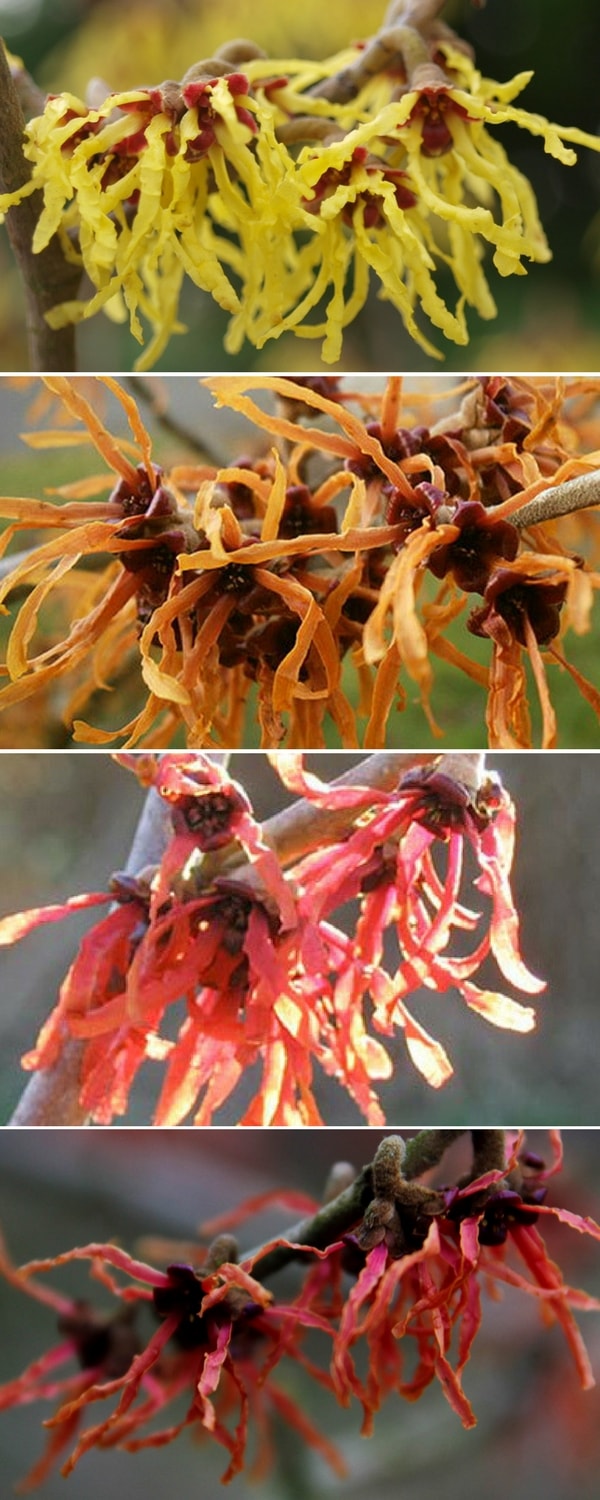
Hamamelis: a stunning palette of colours
Hamamelis has a lovely upright habit, sometimes rounded and spreading as wide as it is tall, with ascending branches.
Some varieties, such as Hamamelis (x) intermedia ‘Feuerzauber’, display a flared silhouette in their youth, then become very flared, resembling the shape of a large cup when the bush is mature.
Ornamental, this bush will surprise you with its original flowers. Fragrant, yellow, coppery orange, or red, they bloom, depending on the species, from October to March, before the leaves appear.
The “Witch Hazel” flowers on wood that is at least one year old. Thread-like, crumpled, almost claw-like, the flowers that dot the bare branches resemble spiders, hence the poetic name “Golden Spider Tree,” or evoke witch’s fingers. Their fragility is only apparent as they are very frost-tolerant and can withstand complete ice cover. The cold even intensifies the flowering. Composed of 4 strap-like petals, sometimes twisted, 1 to 2 cm long, they are grouped in dense clusters like pom-poms. They emit a heady fragrance of Hyacinth, Daffodil, lemon, honey, or even tea. Although quite small (2 to 3 cm), their abundance, vibrant hues, and powerful scent warm up winter.
The foliage, deciduous, is another asset of Hamamelis. Bright green or purple in spring, then lemon turning to bronze green in summer, the leaves adorn themselves in autumn with shades of yellow, cinnamon orange, brick, bright red, or copper, filling the garden with warm, spicy colours as the days shorten.
Its broad, ovate, dentate or crenate leaves resemble those of the Hazel, with well-marked parallel veins and a somewhat crumpled, sometimes slightly velvety underside. They measure 6 to 15 cm long, depending on the species.
The fruits in capsules contain 2 black seeds that reach maturity at the time of the next flowering. The capsules can persist for several years on the branches after releasing their seeds. Note that only the seeds of Hamamelis virginiana are oily and edible.
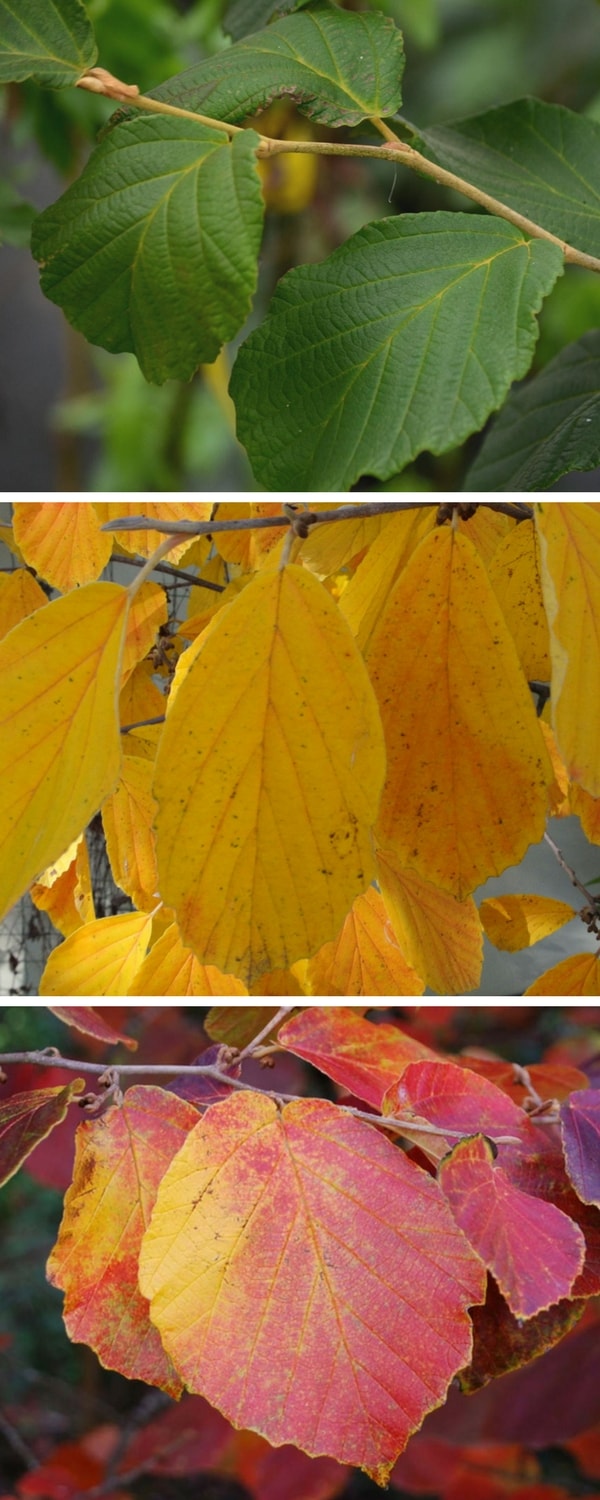
Foliage of Hamamelis ‘Diane’,
‘Arnold Promise’
(autumn)
and ‘Ruby Glow’ (autumn)
Easy to cultivate, Hamamelis should be planted in rich, fresh but well-drained soil and preferably acidic. Pure heather soil is a bit too poor; it should be enriched with compost to ensure vigorous growth. This bush dislikes calcareous soils (some species like Hamamelis mollis are more tolerant). They are, however, particularly resistant to pollution, making them well-suited to the urban atmosphere of city gardens.
Hamamelis loves the sun, especially in winter, but it fears it if it is too scorching in summer. Prefer cool locations, or with a “refreshing” shade provided in the afternoon in summer by a hedge or a low wall. A situation in a clearing or light shade sheltered from cold, drying winds will preserve its flowering.
Perfectly hardy, it can withstand very low temperatures of -20 °C (down to -35 °C for H. virginiana). This beautiful hardiness ensures a long life in all regions. However, it should be spared from the Mediterranean climate, which is a bit too hot and dry in summer.
Mysterious, Hamamelis has long been nicknamed “Witch Hazel.” The English still refer to it as such (witch hazel). A linguistic shift, as it originally had nothing to do with witches but rather with dowsing: its flexible branches were used as dowsing rods by Native Americans. The leaves and bark possess astringent properties known to the Virginia Indians for centuries and are used in herbal medicine. Hamamelis water, found in many cosmetics, has soothing properties for skin inflammations.
Species and main varieties
Among the varieties primarily cultivated in gardens, there are five species of Hamamelis: three native to North America (H. ovalis, H. virginiana, which flowers in autumn, and H. vernalis), and two of Asian origin, from Japan (H. japonica) and China (H. mollis).
The name Hamamelis x intermedia encompasses the group of cultivars resulting from cross-breeding between H. japonica and H. mollis. These are the most common subjects. They are cultivated for their multiple colours ranging from yellow to red, and their flowers are generally larger than those of their parents. The main selection criteria are the flowering time and the colour of the flowers.
- Hamamelis x intermedia: the fragrant flowers, yellow, dark red, or orange, with crinkled petals, bloom from November to March. The cross-breeding of the two Asian species has given rise to a large number of varieties, with flowers that are more or less fragrant, dark red in ‘Diane’, coppery orange in ‘Jelena’, bright yellow in ‘Advent‘, pale yellow in ‘Moonlight’, or lemon yellow tinged with purple in ‘Pallida’, which has the largest flowers, highly valued for their strong honey scent. ‘Ruby Glow’ bears coppery red flowers, and its foliage is narrower than that of other cultivars. In autumn, the foliage of cultivars like ‘Diane’ and ‘Arnold Promise’ takes on opulent shades of coppery red, and orange in ‘Feuerzauber’.
- Hamamelis virginiana: also known as “devil’s coffee”, it is the largest and most vigorous of the Hamamelis, reaching up to 5 metres tall at maturity and is also the earliest. Its lemon yellow, slightly fragrant flowers begin to bloom as early as October when the foliage turns orange and gold. The essence of Hamamelis, used in cosmetics, is derived from it.
- Hamamelis japonica: in our latitudes, this bush with a spreading habit will not exceed 3 to 4 metres in height. Its fragrant, light yellow flowers, with corkscrew petals, bloom in great numbers from January to March. Its oval leaves turn yellow in autumn. ‘Zuccariniana’ bears an abundance of small pale lemon flowers that emit a lemony fragrance. They appear late, in February-March. ‘Sulphurea’ is noted for its profusion of pale sulphur yellow flowers from January to the end of February.
- Hamamelis mollis: this airy, spreading shrub offers very fragrant golden yellow flowers at the end of February. Its autumn foliage turns yellow. ‘Brevipetala’ has shorter, upright petals, bronze yellow-orange, and ‘Goldcrest’ has red-tinged spikes at their base.
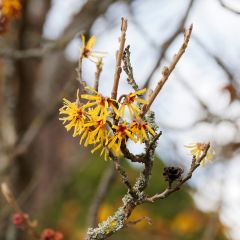
Hamamelis mollis Pallida - Witch Hazel
- Height at maturity 3 m
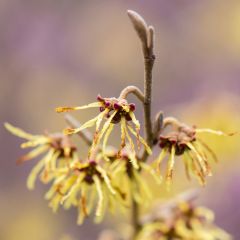
Hamamelis intermedia Arnold Promise - Witch Hazel
- Flowering time February, March
- Height at maturity 4 m
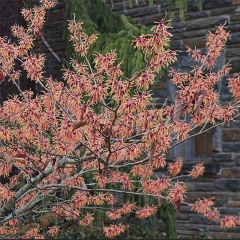
Hamamelis intermedia Feuerzauber - Witch Hazel
- Flowering time March, April
- Height at maturity 3,50 m
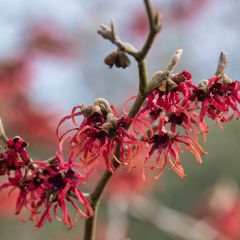
Hamamelis intermedia Ruby Glow - Witch Hazel
- Flowering time February, March
- Height at maturity 2 m
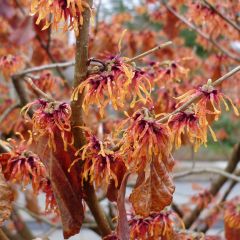
Hamamelis intermedia Jelena - Witch Hazel
- Flowering time February, March
- Height at maturity 4 m
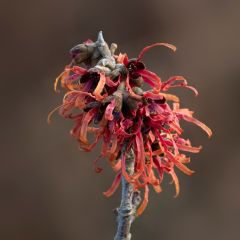
Hamamelis intermedia Diane - Witch Hazel
- Height at maturity 3,50 m

Hamamelis intermedia Ruby Glow - Witch Hazel
- Flowering time February, March
- Height at maturity 2 m
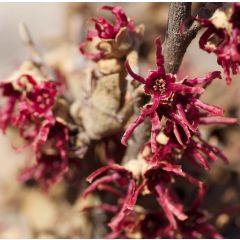
Hamamelis vernalis Amethyst - Witch Hazel
- Flowering time March, April
- Height at maturity 2,50 m

Hamamelis intermedia Feuerzauber - Witch Hazel
- Flowering time March, April
- Height at maturity 3,50 m
- Hamamelis (x) intermedia ‘Primavera’, with yellow flowers, early but not fragrant, it is the only one!
- Hamamelis ‘Westerstede’, with very abundant and rather late golden yellow flowers and a subtle fragrance.
- Hamamelis mollis ‘Brevipetala’, for its bouquets of golden yellow flowers with short petals, an additional oddity for this hybrid!
- Hamamelis (x) intermedia ‘Moonlight’, for its chick yellow flowering speckled with crimson at the base.
- Hamamelis (x) intermedia ‘Orange Beauty’, for its incredible long bright yellow flowering washed with orange and crimson.
Discover other Winter-flowering shrubs
View all →Available in 0 sizes
Available in 1 sizes
Available in 1 sizes
Available in 1 sizes
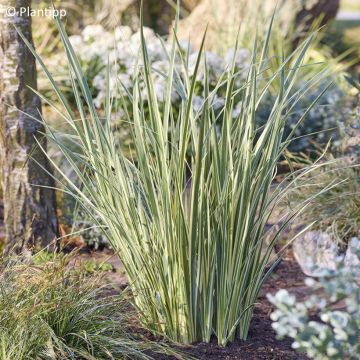
Available in 1 sizes
Available in 1 sizes
Available in 1 sizes
Available in 1 sizes
Available in 2 sizes
Available in 1 sizes
Planting
Where to plant witch hazel?
It can be found throughout France, except in Mediterranean climates, which are a bit too hot and dry in summer. With excellent hardiness, it can withstand very low temperatures of -20 °C, ensuring perfect hardiness in all regions. Its flowers, despite their apparent fragility, resist frost.
It is best to protect it from winds that could dry it out and damage its flowers. It thrives in sunlight, provided it is not too scorching, or in partial shade in a rather humid environment. Too dense shade would result in a somewhat more subdued flowering. In winter, it should benefit from maximum light to bloom abundantly and display beautiful autumn colours.
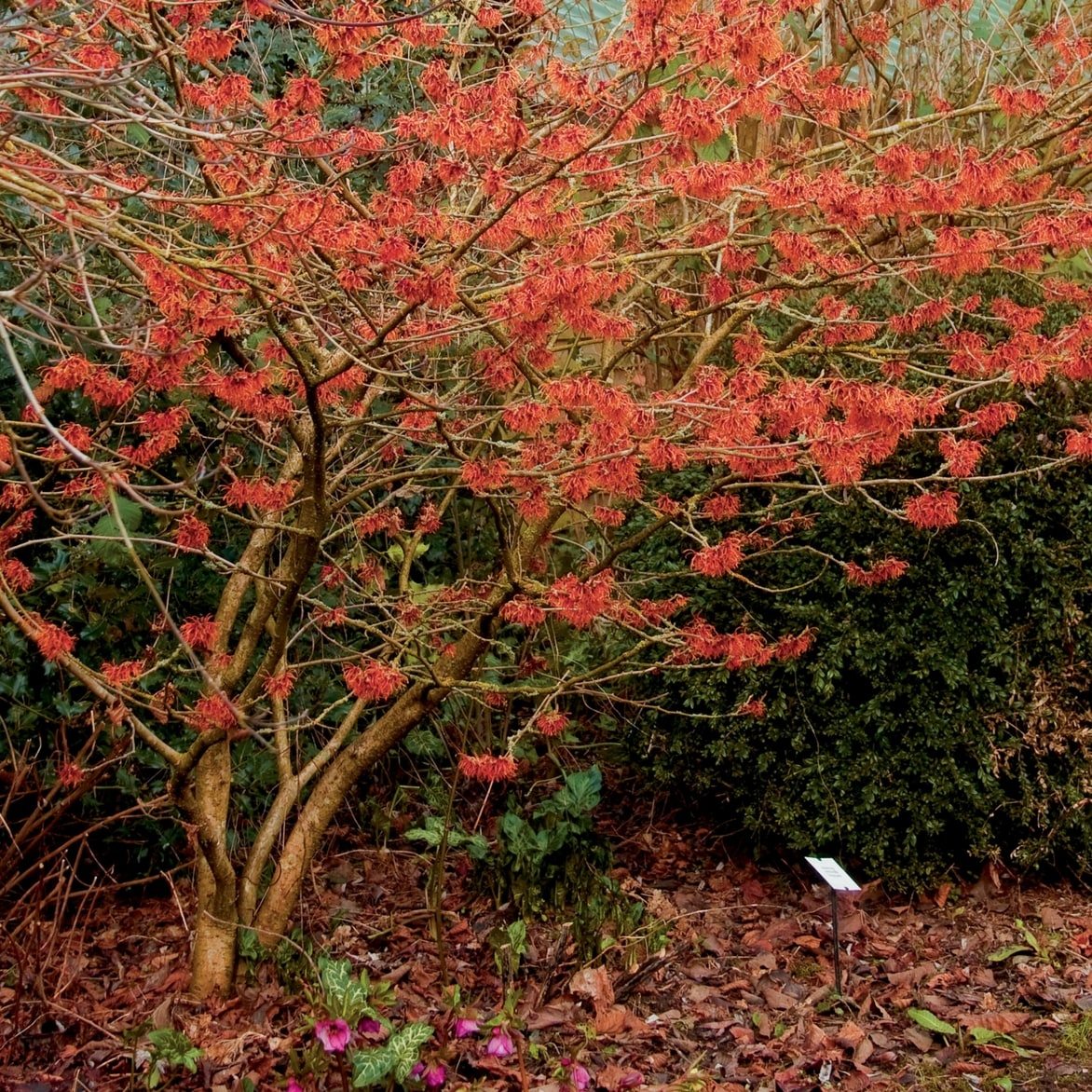 Witch Hazel or Sorcerer’s Hazel
Witch Hazel or Sorcerer’s Hazel
It prefers slightly acidic, cool, and well-drained soil. It dislikes chalky soil and should be grown in heather soil or in ordinary non-chalky soil enriched with compost. If the foliage turns yellow and its flowering becomes increasingly subdued, it indicates that the soil is too chalky for its liking. Transplant it by adding heather soil and forest compost.
Its elegant silhouette should not be hidden: it needs its own space and is ideally planted alone in a well-cleared area, visible from the house. It forms lovely centres in borders, standing out against a dark background of evergreen foliage and introducing an original focal point.
It can also be planted in groups of 3 or 5, under large deciduous trees; on frosty mornings, they will offer an enchanting spectacle.
Its slow growth allows for pot cultivation while it is still young. This way, you can enjoy its magnificent colours and fragrance on the terrace or near entrances.
When to plant?
Witch Hazel is preferably planted in autumn to encourage rooting before winter. If you are tempted during its flowering period, wait until the end of it to plant.
If purchased in a pot or container, you can plant it outside of autumn, avoiding periods of frost or extreme heat. If you are eager to admire it, do not buy a specimen that is too young: growth is slow, and the bush will only reveal its full splendour after many years.
How to plant?
Dig a wide hole and add sand mixed with heather soil or turf if the ground is chalky.
Read also
Hamamelis: the most beautiful varietiesMaintenance and pruning
Maintenance is easy: witch hazel is a bush that is almost insensitive to most diseases as well as to attacks from insects or parasitic organisms. However, it can be affected by coral disease and armillaria.
To combat coral disease: remove and burn branches showing orange pustules and apply a sealant and a fungicidal if necessary.
Armillaria is a fungus favoured by excess moisture that infiltrates at the root level and destroys the young plant abruptly. Removal of the plant and replacement of the surrounding soil are then recommended.
Pruning is not necessary, except to rebalance the habit after flowering, which becomes more pronounced with age.
If you are growing witch hazel in a pot:
You can keep a witch hazel in a container for 5 – 6 years. You will enjoy the beauty of its foliage, but flowering will remain limited. Remember to provide fertiliser once a year and to water during periods of intense heat or prolonged drought.
Propagation
Witch hazel is a difficult plant to propagate. Seed germination is very slow, and propagation by cuttings is hit or miss, which is why most plants available commercially are obtained through grafting. Grafted witch hazels are sold at an older age, as their growth is slow.
Ingrid shares more in How to propagate witch hazel in 5 steps?
Pairing ideas with Hamamelis
Inescapable in winter scenes, Hamamelis is essential for enlivening the garden in autumn and winter. To fully enjoy its beauty and fragrance, plant it in isolation near the house in a pot or against a backdrop of permanent greenery formed of conifers, evergreen bushes, or grasses that will highlight the delicate beauty of its flowers. It can be paired with spring shrubs like Forsythia, which will take over the floral display in the garden.
Hamamelis prefers acidic soils, making it easy to combine with ericaceous plants with evergreen foliage and winter flowering such as Camellia, Azaleas, dwarf Rhododendrons, Sarcococca, or Daphnes. It can also be planted in groups of 3 or 5 for a truly enchanting mass effect.
For a colourful winter garden, why not pair Hamamelis (‘Jelena’) with the stunning Edgeworthia chrysantha (or Paperbush), one or more decorative fruit shrubs like the Ornamental Apple, and a few Cornus with colourful stems:
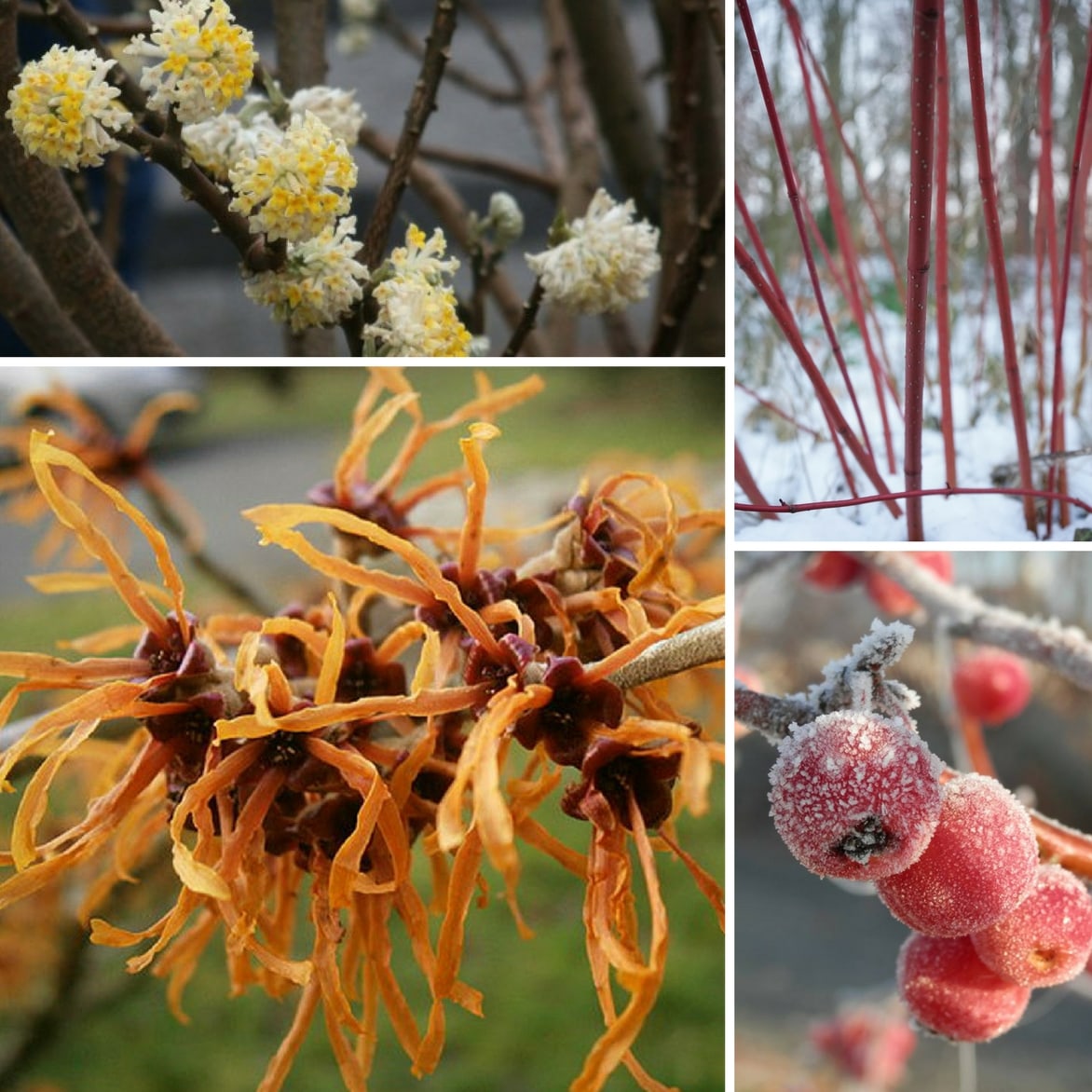
A very colourful winter garden
In a container or large pot, it can be combined with a Holly, a rockery conifer, or a Spindle.
You can also dress the base of the shrub with Winter Heathers, Hellebores, or bulbs to accompany the foliage in autumn and spring when Hamamelis appears bare, its flowering finished and its young leaves not yet emerged.
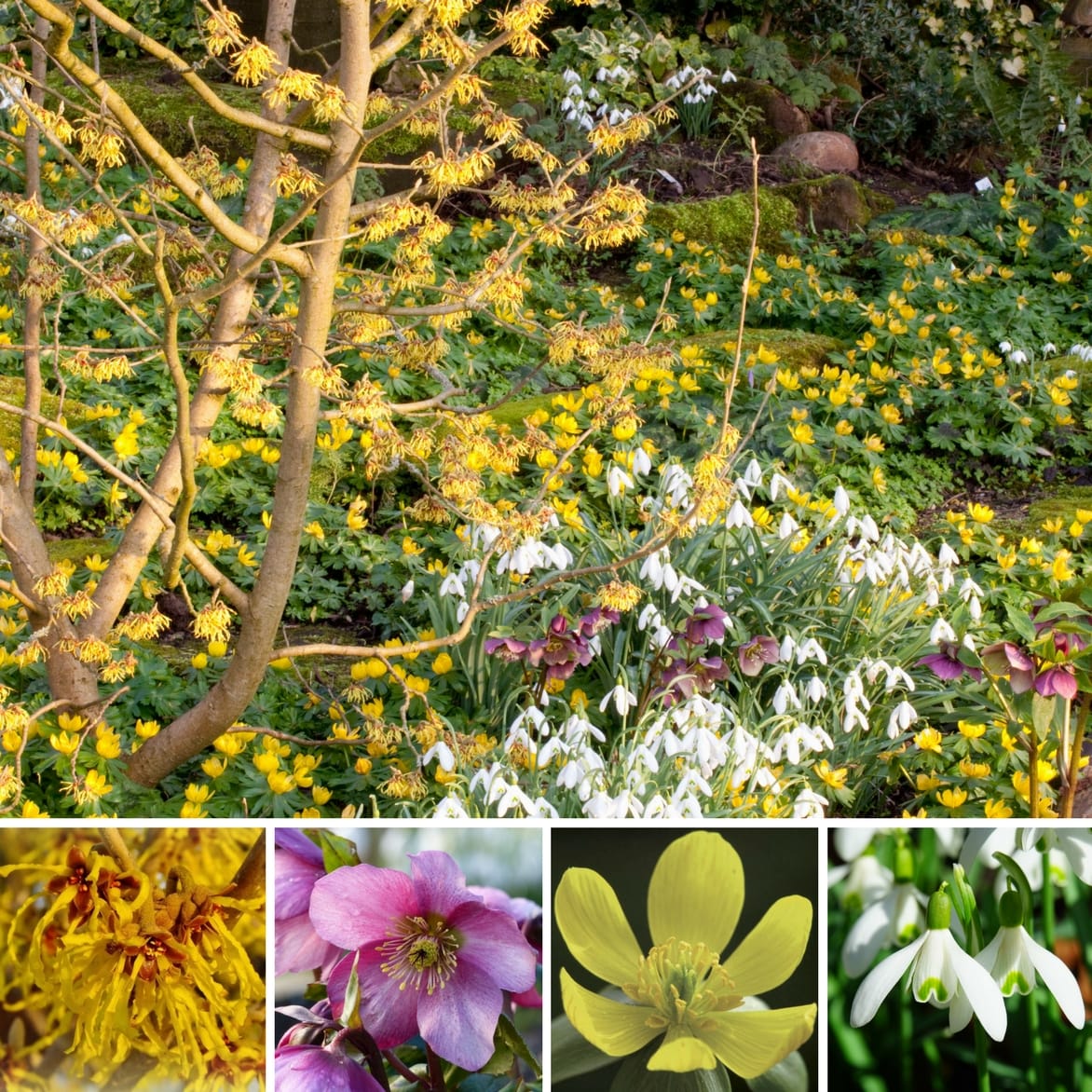
Hamamelis ‘Arnold Promise’, accompanied by Eranthis hyemalis, Galanthus nivalis, and Helleborus orientalis – Dial Park – Photo Credit GAP Elke Borkowski
Useful resources
-
- The most beautiful witch hazels are with us!
- The Kalmthout Arboretum site describes the genus Hamamelis very well
- Pierre’s paper, our expert, shares with us on the Promesses de fleurs blog an inspired walk through the Arboretum of Kalmthout
- Discover on our blog: the most beautiful winter flowerings
- Our 7 ideas to combine witch hazels
- Our articles: Witch hazel, the most beautiful varieties; Choosing a witch hazel; 7 witch hazels with yellow flowers for a flowering winter; 4 witch hazels with red flowers for a flamboyant garden in winter
- Discover How to make witch hazel tea?
- Our tips: How to prune witch hazel?
- Subscribe!
- Contents






























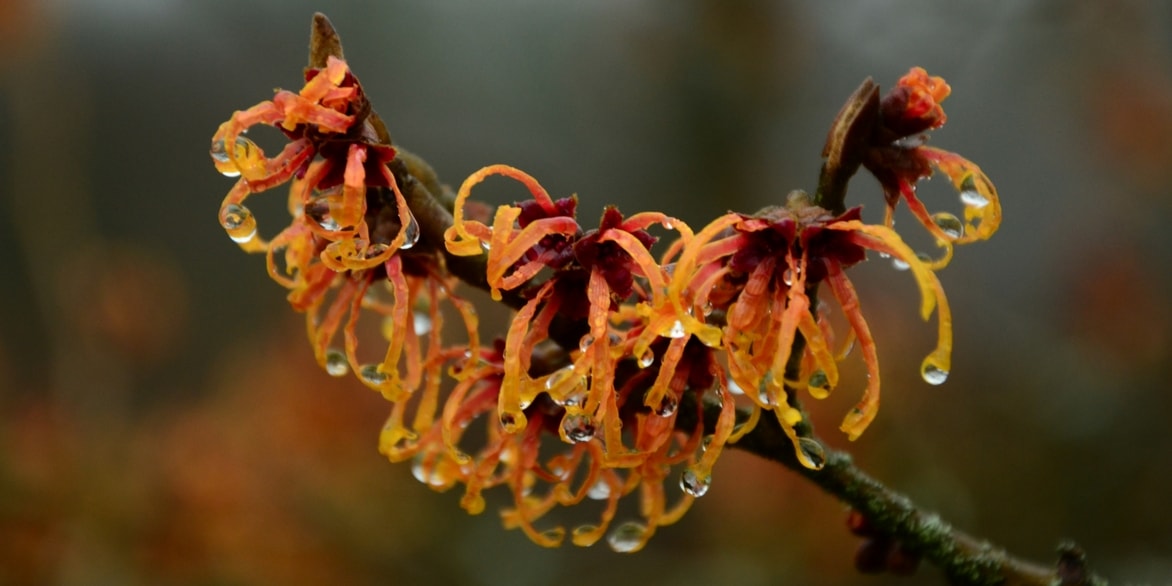





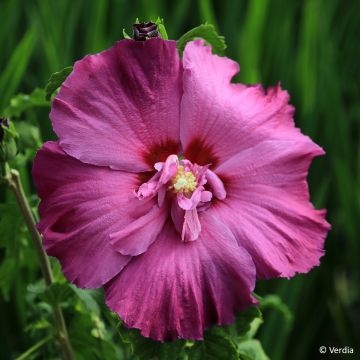
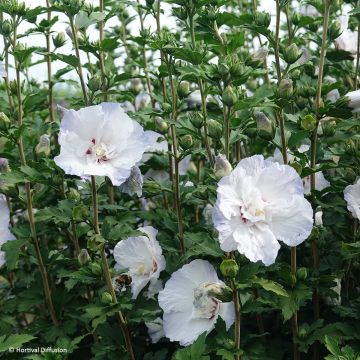


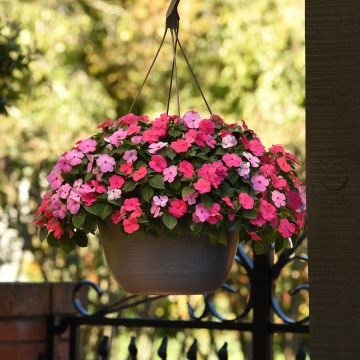
Comments